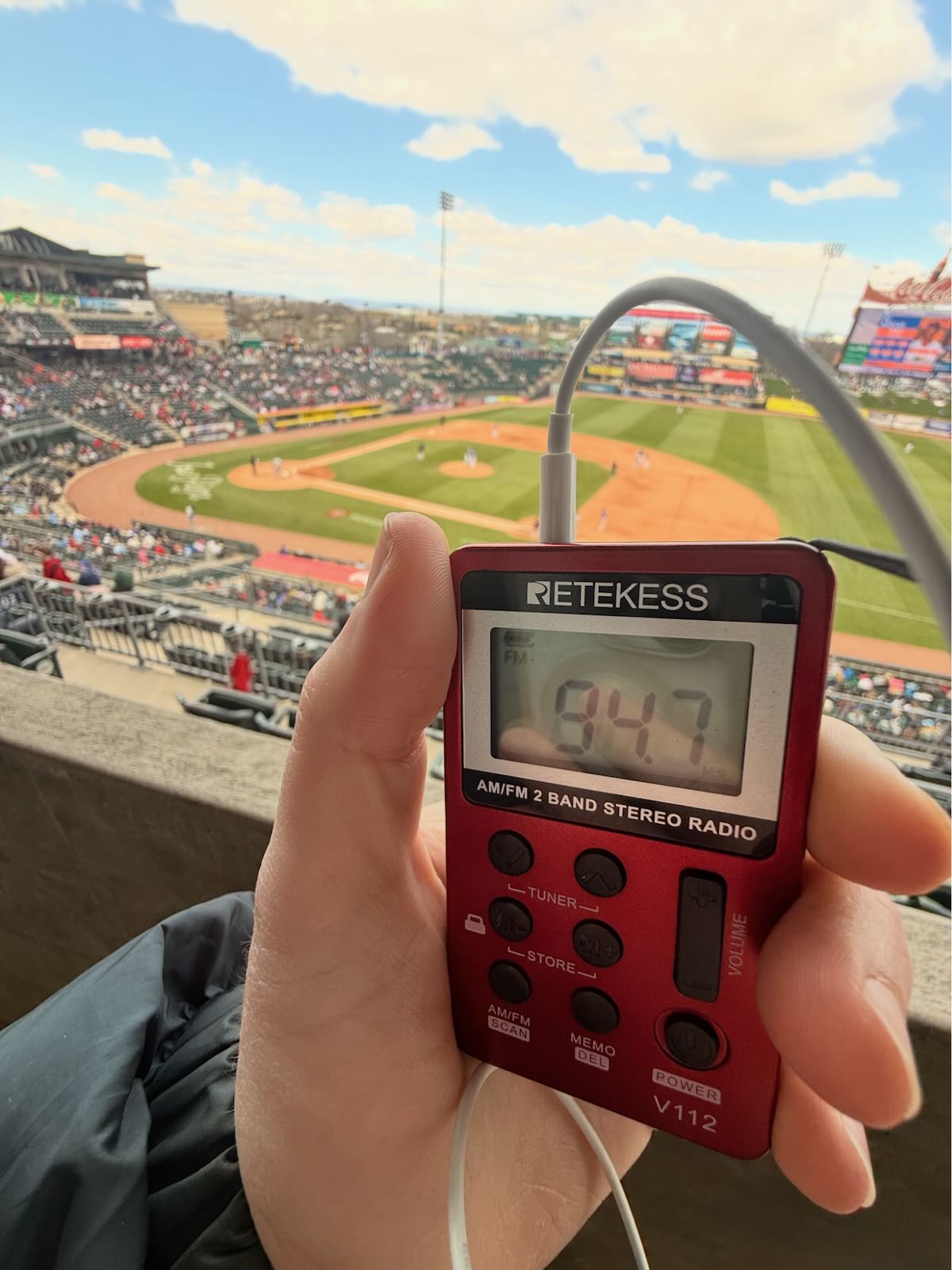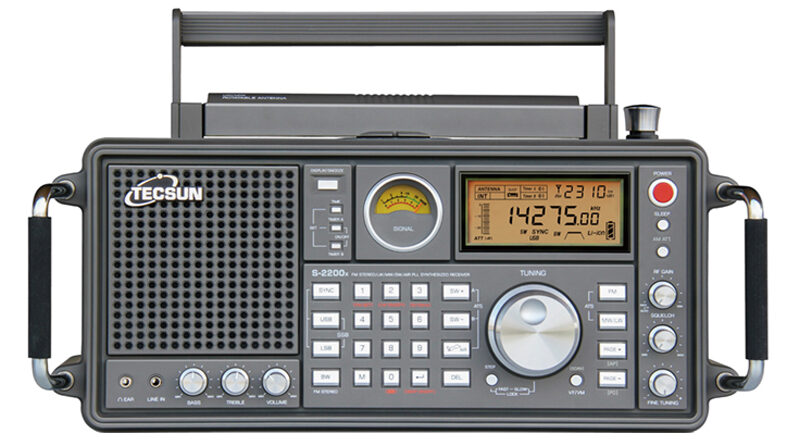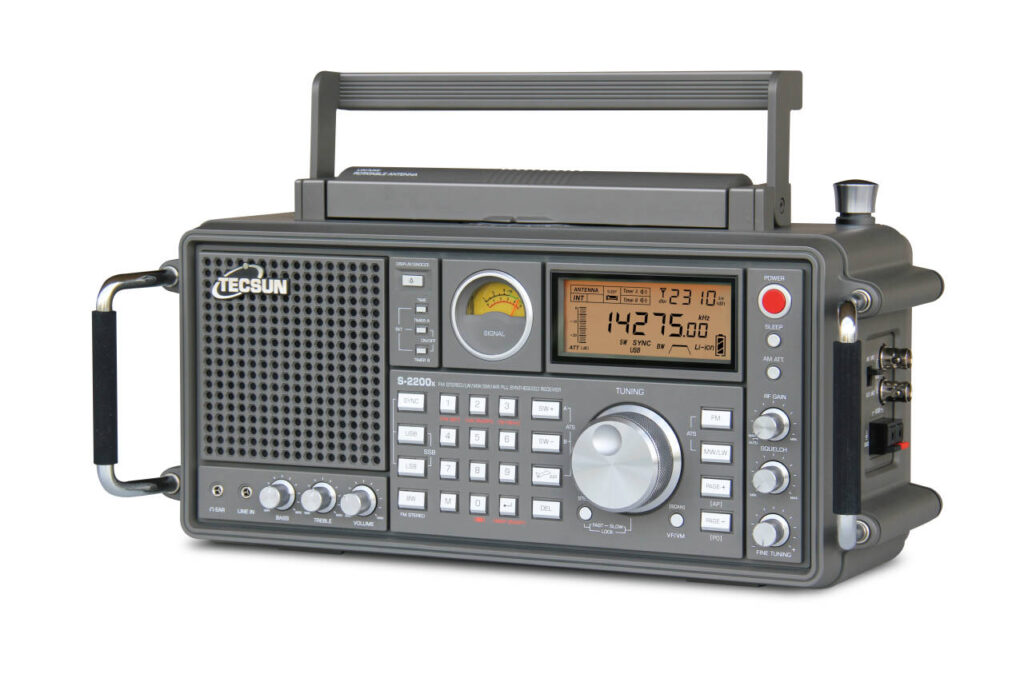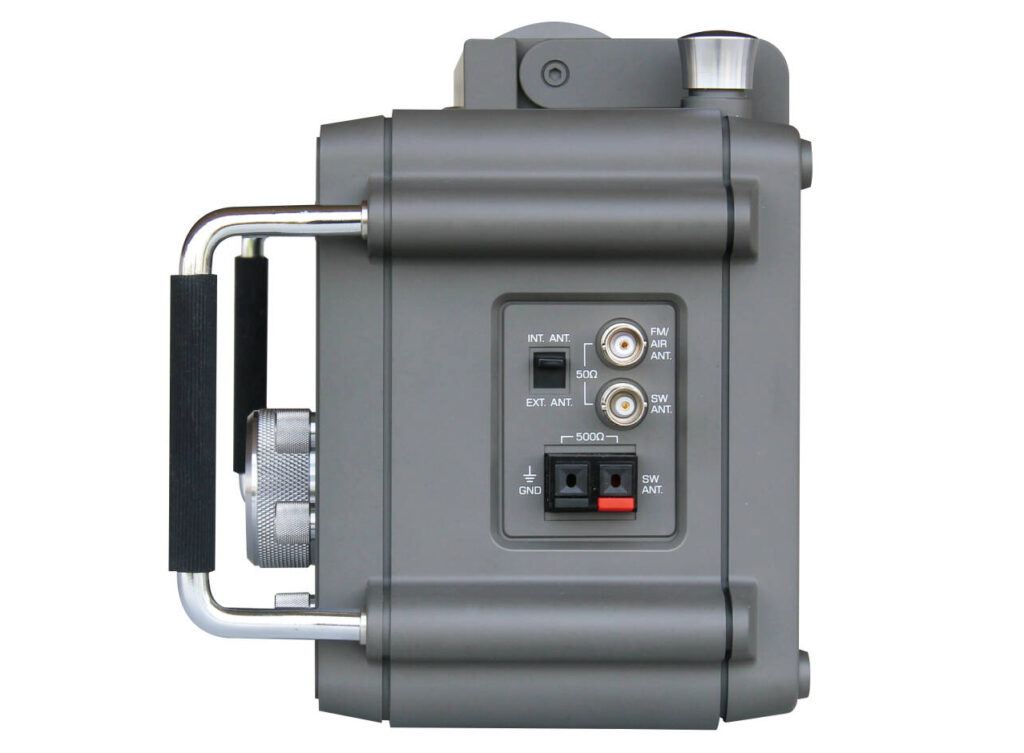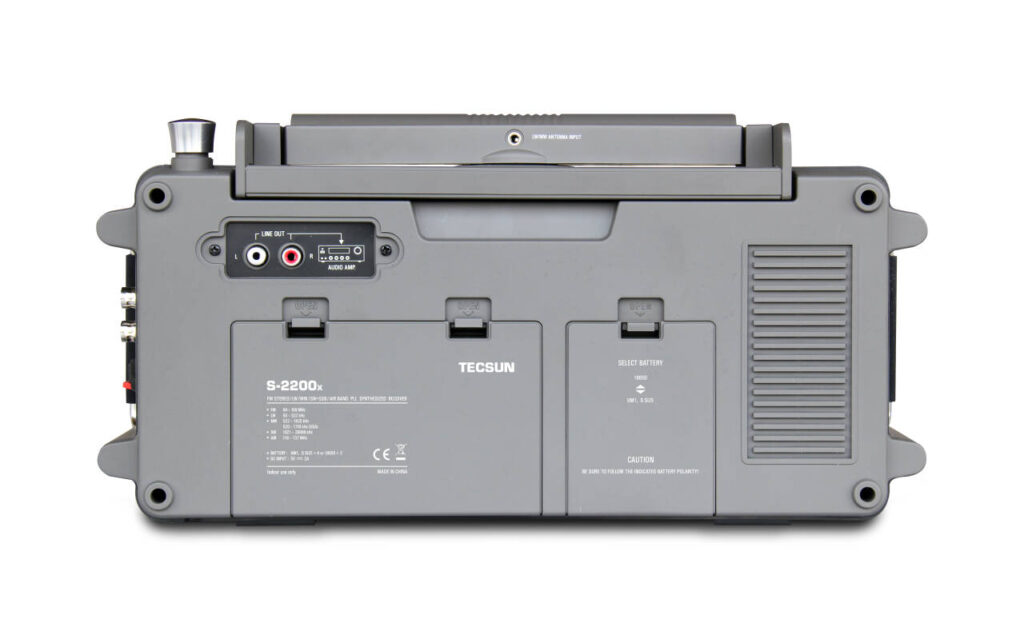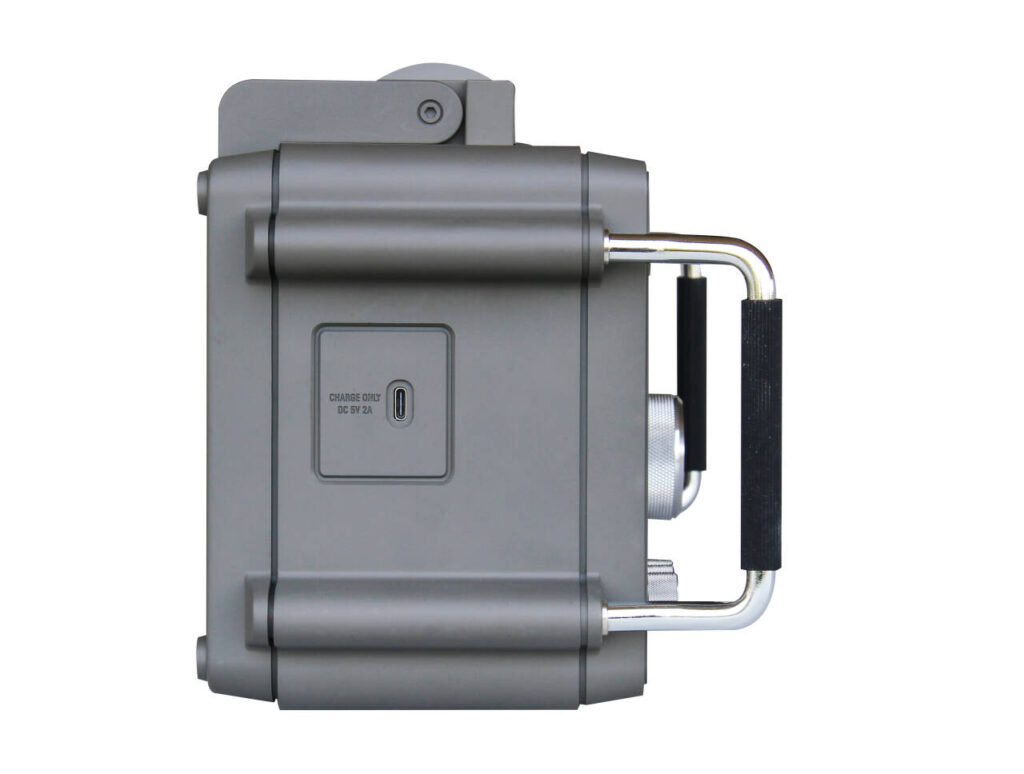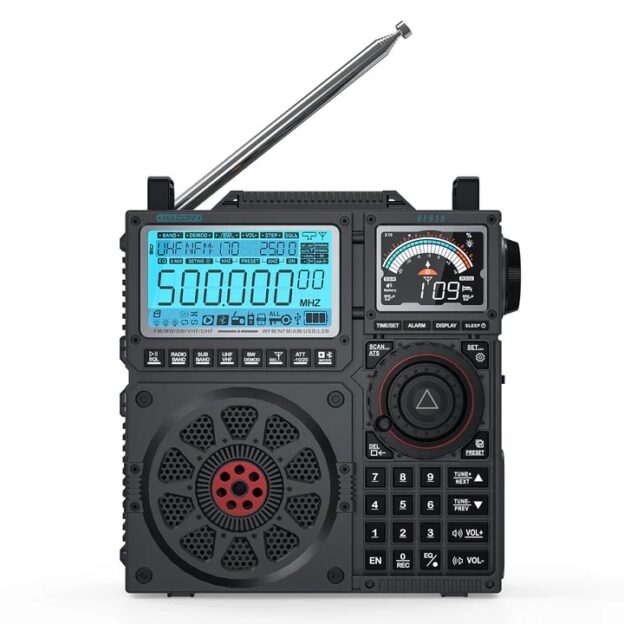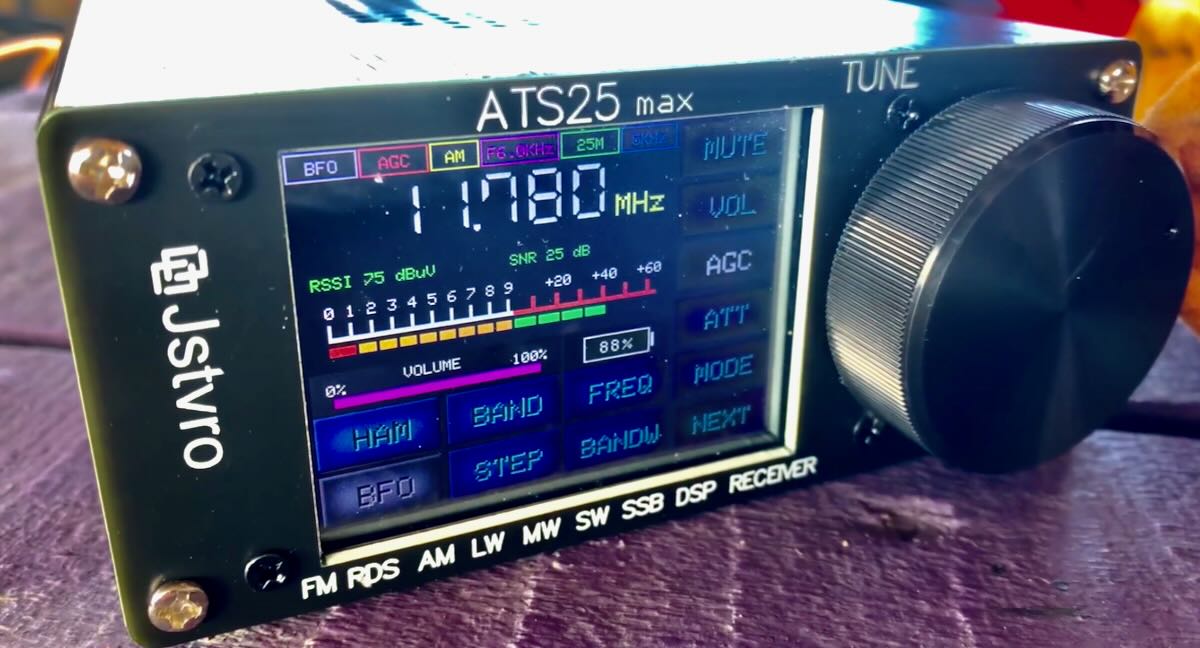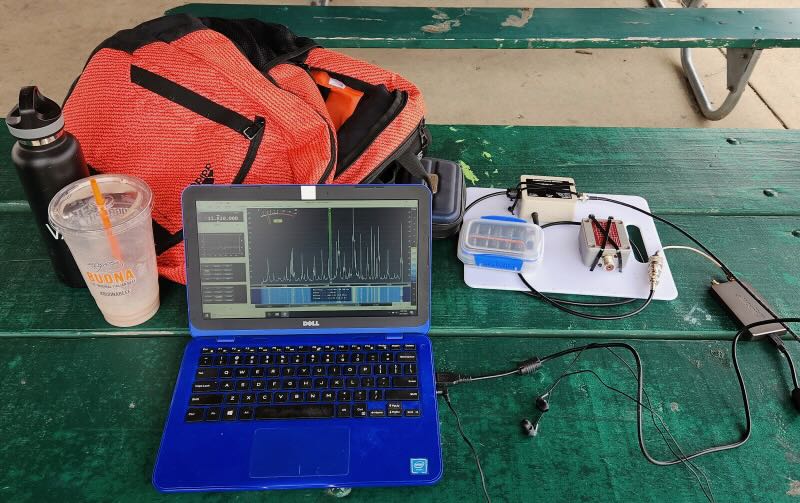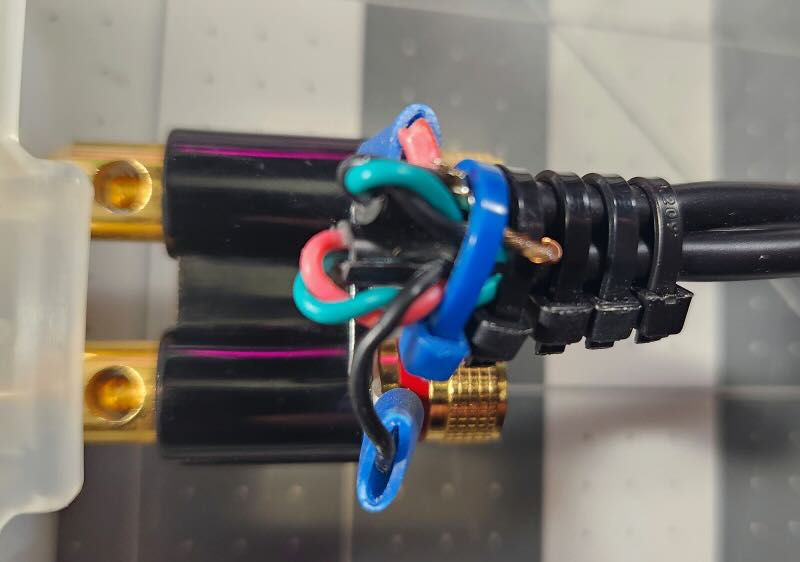by Aaron Kuhn
In my previous post for SWLing Post, I suggested the characteristics of an ideal ballpark radio and considerations for radio selection. While researching that post, I came across the Retekess V112 which ticked a lot of the boxes I recommended – compact, cheap, unobtrusive.
The Retekess V112 has indeed turned out to be a compact, affordable, and unobtrusive companion for enhancing the game-day experience at the ballpark. Priced at a consistent $15.49 on Amazon [SWLing Post affiliate link] for over a year now, this little red (or Gold) radio has exceeded my expectations.
Unboxing and Accessories (and what to replace):
While the physical packaging is a distant memory to me, the V112 comes with earbuds, a neck lanyard, and a Micro-USB charging cord.
- Earbuds: While included, the provided earbuds are notably uncomfortable and were quickly relegated to the recycling bin. My ears are not your ears of course, and they might be salvageable with interchangeable eartips if you have some lying around, but it’s highly recommended to bring your own comfortable earbuds or headphones. This is especially important as the headphone wires double as the antenna, and reception can vary significantly between different pairs of headphones based on the cable. My older Apple EarPods offered good comfort and reception, while Sony MDRE9LP’s performed poorly. Experimentation of pairing the radio with low-cost IEMs would be an interesting project.
- Neck Lanyard: Surprisingly, the neck lanyard is the hidden gem of this package. It allows the radio to hang around your neck, keeping your hands free for hot dogs and foul balls.
- Micro-USB Charging Cord: While USB-C would be a welcome modern update, the included Micro-USB cable is understandable given the radio’s price point and older engineering. It’s hard to complain about the cable-port standard chosen when they give you the cable you need, and you probably have multiple other Micro-USB cables kicking around in storage boxes and drawers already.
Portability and Power:
- Size and Weight: The Retekess V112 truly shines in its portability. Weighing 45 grams (0.1 lbs) and measuring 3.3 x 1.8 x 0.5 inches, it’s so small and lightweight that it’s easy to forget you’re carrying it, and easy to lose it in your pocket (like I have done multiple times!) This weight is even more impressive given the battery is built-in. I like to leave my earbuds plugged into it and wrap them around the radio body for transport, producing a tidy, tiny package of everything I need.
- Battery: Battery life is another strong suit – I have yet to accidentally run it down, even forgetting to charge between games. I typically throw the radio on a battery bank on the way to the game, or shortly before the game, and have never run down the 500mah battery. I can’t find a stated battery life, and due to my experience really can’t estimate a runtime besides “long enough for extra innings.”
Features and Functionality:
- Antenna: While relying on the headphone cable for an antenna does impact reception, it eliminates the bulk and vulnerability of a traditional antenna whip. This helps to make the radio instantly pocketable and prevents accidental seat-neighbor-pokes or damage. There’s nothing fancy such as selectable bandwidths to really help you out here, so you’re either going to have usable reception or you won’t.
- Power/Mute Button: The power button cleverly doubles as a soft-mute, perfect for cutting out commercials between innings. A quick button tap when the last batter is out mid-inning mutes until you see the next batter up, and returns the previously set volume quickly.
- Keypad Lock: The keypad lock function is invaluable for setting the desired volume and then tossing the radio in your pocket or letting it hang from the lanyard without accidental button pressings changing stations or volume.
- Presets / Direct Frequency Entry: The lack of a number keypad for direct frequency entry is a minor inconvenience and my only real complaint, but in reality it’s lack of preparation. The radio does offer presets, making it easy to save your preferred stations before heading to the game – as long you remember to do so.
Future Wishlist:
If any radio manufacturers are out there listening (get in touch, Retekess or Tecsun!) I still think there’s a few features that would make an even better ballpark radio as discussed in my article from last year:
- Bluetooth Headphone Support: There are a number of small radios on Amazon that advertise themselves as having “Bluetooth”, but when you dig deeper the feature just turns the radio body into an external speaker to your phone/tablet/laptop. The exception to the rule is the Prunus J-618 which claims actual bluetooth headphone support. Bonus points to manufacturers – allow two sets of paired headphones to be driven simultaneously. Finding comfortable Bluetooth earbuds is way easier these days at retail than finding a pair of wired earbuds, and you probably already own a pair to your liking.
- Replaceable Parts: Implementing Bluetooth headphone support is going to require the move to an external antenna, and with that I’d love to see an antenna that can be easily replaced if it snaps off / is broken. I’m pro-repairability on electronics, so it would be great to see parts kits available at a small cost up-front with the radio to increase the likelihood the device lasts for years. Think antennas, plastic trim/doors, clips, lanyards, etc.
- Selectable Bandwidth: I’d pay a little more for a radio that has a selectable bandwidth feature on both FM and AM. Legible commentary for a ballgame doesn’t require a very wide bandwidth, and this would go a long way towards turning an unstable/fringe signal into something more enjoyable. I’ve made use of bandwidth selection on Tecsun radios at the ballpark in the past and this is a sorely missed feature.
- USB-C Charging: It’s 2025 – the world has moved to USB-C. Any device worth its salt these days should include a USB-C charging port, with actual proper USB-C PD support – none of that hacked up USB-A to USB-C junk.
- Multiple Mounting Options: The lanyard on the Retekess V112 is great, what would be even more fun is some kind of clip that could attach to a stadium cupholder, or be attached to a seat in some fashion. Being able to strap a radio somewhere with bluetooth headphone support would be the ultimate convenience.
Conclusion:
For under $17 delivered to your door, the Retekess V112 is a great investment for live baseball enthusiasts. This radio has consistently enhanced my enjoyment of baseball games with its portable size, performance, and ease-of-use.
At $25, the Prunus J-618 looks like it might be a contender to the Retekess V112 throne and is one I’ll likely be checking out in the future. The Tecsun PL-368 is an attractive proposition for a ballpark radio, but in my mind provides more radio than you need, at a price-point ($75-$100) where I’d be afraid of breaking it or misplacing it in a ballpark environment.
For what it is, I’m not sure there’s much else that can compete at this price with the Retekess V112 for a low-cost, turn-key solution to live baseball play-by-play.

